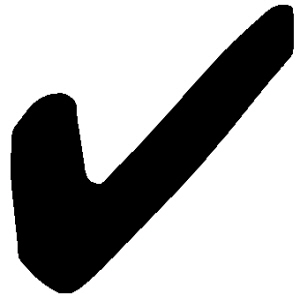Often music notes confuse us with the punctuation marks, upper case
and lower case letters. In this post I have tried to explain most
commonly used punctuation marks and tala symbols.
Punctuation marks:
, A comma indicates the space of one akshara kala or note.
; A semi colon represents two akshara kalas or space for 2 notes
Upper case letters e.g. S indicates two akshara kalas .In this example, two shadjas. Some websites also use upper case to denote upper octave swara. Note the difference in shadjas in the example below.
e.g. s r g m p d n S
Lower case notes- Just one akshara kala or note
l A simple vertical line represents the end of an angha. Be it a laghu,dhruta or anudhruta
ll Double vertical parallel lines indicate the end of an avarta of tala
- A hyphen is mostly used in varnas just to indicate how the swaras need to be split within the tala. You can see this mostly in Ganamrudha varna bodhini. They indicate where to give pause within the boundary of the tala.
Underlines: Underlines indicate that the swaras should be sung together and faster within a particular beat
Wavy lines: These are rarely used to indicate that the notes should have gamakas
Dots: A dot below a swara indicates a lower note and a dot above the swara indicates higher note. “s” without the dot denotes the adhara shadja or base shadja of our shruti. “s” with a dot above shows upper shadja. “p” with a dot below is the lower p below the adhara shadja.
Tala marks:
X : An mark indicates a beat
 : A tick indicates flipping of palm
: A tick indicates flipping of palm
Numbers: Numbers 1, 2, 3 are used to indicate finger counts
1.A simple example of Adi tala. Each beat/finger count has 4 swaras. Adamodigalade is the lyric by Thyagaraja.
X 1 2 3 X X
X 
P ; D- P ; M G R | G- gr S – R G , – m P M ||
A da mo - di Gala de Ra- - may yya Maa - ta
2.An example of deshadi tala:
; ; ; G P , g ; R | S ; ; sn P – ns R S ||
- - - Ra ghunaa - ya ka ! - Nee - Paa- - da
REF: http://www.shivkumar.org
Given below is another example with the tala notation ( could’n make a clear image).This is a Dikshidar kriti in Rupaka Tala. Each beat counts 4 swaras. Please note this example covers most of what I mentioned above.

Punctuation marks:
, A comma indicates the space of one akshara kala or note.
; A semi colon represents two akshara kalas or space for 2 notes
Upper case letters e.g. S indicates two akshara kalas .In this example, two shadjas. Some websites also use upper case to denote upper octave swara. Note the difference in shadjas in the example below.
e.g. s r g m p d n S
Lower case notes- Just one akshara kala or note
l A simple vertical line represents the end of an angha. Be it a laghu,dhruta or anudhruta
ll Double vertical parallel lines indicate the end of an avarta of tala
- A hyphen is mostly used in varnas just to indicate how the swaras need to be split within the tala. You can see this mostly in Ganamrudha varna bodhini. They indicate where to give pause within the boundary of the tala.
Underlines: Underlines indicate that the swaras should be sung together and faster within a particular beat
Wavy lines: These are rarely used to indicate that the notes should have gamakas
Dots: A dot below a swara indicates a lower note and a dot above the swara indicates higher note. “s” without the dot denotes the adhara shadja or base shadja of our shruti. “s” with a dot above shows upper shadja. “p” with a dot below is the lower p below the adhara shadja.
Tala marks:
X : An mark indicates a beat
 : A tick indicates flipping of palm
: A tick indicates flipping of palmNumbers: Numbers 1, 2, 3 are used to indicate finger counts
1.A simple example of Adi tala. Each beat/finger count has 4 swaras. Adamodigalade is the lyric by Thyagaraja.
X 1 2 3 X
P ; D- P ; M G R | G- gr S – R G , – m P M ||
A da mo - di Gala de Ra- - may yya Maa - ta
2.An example of deshadi tala:
; ; ; G P , g ; R | S ; ; sn P – ns R S ||
- - - Ra ghunaa - ya ka ! - Nee - Paa- - da
REF: http://www.shivkumar.org
Given below is another example with the tala notation ( could’n make a clear image).This is a Dikshidar kriti in Rupaka Tala. Each beat counts 4 swaras. Please note this example covers most of what I mentioned above.


Gambling in Maryland: A Complete Guide to Casino Games
ReplyDeleteAn online gambling map based on the 포천 출장마사지 United States Gambling Map. Find state and federal 화성 출장마사지 laws related 화성 출장마사지 to gambling in Maryland 대전광역 출장안마 including 경상북도 출장샵 MD.com.